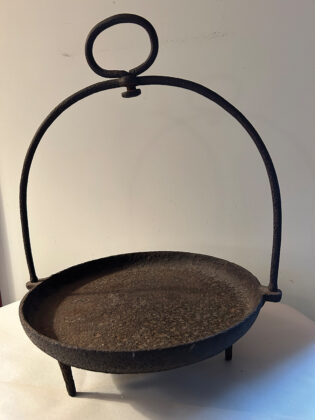
For nearly a century, the Conestoga wagon — tens of thousands of which were built — was the iconic vehicle that transported American settlers along the trails of the wilderness, over the Appalachian and Alleghany Mountains and into the great Ohio Country beyond. But with the opening of the canal systems in the 1830s, overland delivery of materials was not needed as much as it had been in the past. It became cheaper to ship goods by boat to various ports of call along the canal than transport them by wagon.
Later, canal boats began delivering the materials that would be used to build the railroads in the 1840s. In so doing, they became the harbingers of their own demise as the railroaders ultimately put both the “canawlers” and Conestoga teamsters out of business.
And then, one day, the Conestoga wagons were gone.
Today, it is extremely unusual to see a Conestoga wagon outside of a museum. Where did they all go?
Well, it happened this way. Upon arriving at the site where they planned to create a homestead, the first thing that settlers would do was cannibalize their wagon. They removed the canvas cover and U-shaped wooden hoops that supported it in order to make a type of Quonset hut to store the remainder of the possessions they had brought with them. The canvas covers made excellent storage sheds because they had been waterproofed with linseed oil when first woven.
Those supplies would have included what was left of their stores of flour, coffee, sugar, dried meat and other foodstuffs, along with wooden chests containing a rifle, clothing, ammunition, a lantern, cooking utensils and additional household goods.
Other chests and barrels would have contained the priceless seeds that needed to be successfully sown soon if the settlers were to be able to grow crops to avoid starvation during the coming winter. As for furniture, there was little. Most of it would have been dumped out along the trail when the animals pulling the wagon began to become exhausted.
These boxes also contained the iron parts of the tools that would be needed during the creation of the homestead. Settlers typically did not transport wooden handles for their tools, both because they added weight, and the settlers knew there were plenty of trees where they were going from which they could craft the handles.
The brass bells that had jangled along the trail from the harness’s hames were removed from the wrought iron frame on which they had been mounted and tied to the necks of the animals so that they could be located as they foraged in the woods. The bell frames themselves would eventually be taken to a blacksmith to be wrought into needed tools.
The wagon was scavenged for all other iron parts that could be used in starting the homestead so that they, too, could be re-wrought into other useful items. Eventually, the wagon was stripped down to its chassis and running gear which would become reincarnated with a new body to be used for farm work or taking produce to market.
Meanwhile, the settlers had to immediately create some sort of a temporary shelter, which often took the form of a three-sided lean-to. Saplings were cut from the woods to form the basic framing elements and lashed together with rope. The three enclosed sides were made from a wattle of branches and vegetation, while the roof was created from large pieces of bark. The third side was left open and a fire was kept constantly burning both for warmth, as well as to cook food over. Oftentimes, the sideboards of the wagon became incorporated into this structure as well, frequently as a table or benches.
Sometimes, however, the wagon sideboards had to perform a sadder service.
A story is told about Christian Partshie, an 1817 settler in Green Township, Wayne County, Ohio, near the present town of Smithville. On Dec. 27 of that year, Partshie went to help a neighbor about two miles away raise a round log barn.
As he and other neighbors were working to hoist a large log to roof level, the ropes broke, allowing the log to fall onto Partshie’s chest, killing him instantly. A coffin was needed, but deep snow and blizzard-like conditions made it impossible for anyone to travel to the more established town of Wooster about eight miles away. Wooster had a sawmill by that time where boards to construct a coffin could have been obtained.
Thus, the only sawn lumber available were the sideboards of Partshie’s wagon, which were removed to construct his coffin. Another neighbor — a blacksmith who was helping build the barn — went home to make the nails.
From this initial primitive encampment, the settlers would begin to move forward with the many daunting challenges of creating a permanent homestead in a forbidding wilderness.
















